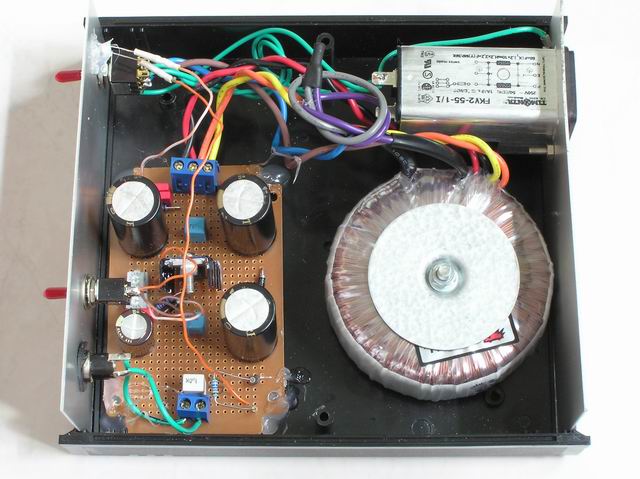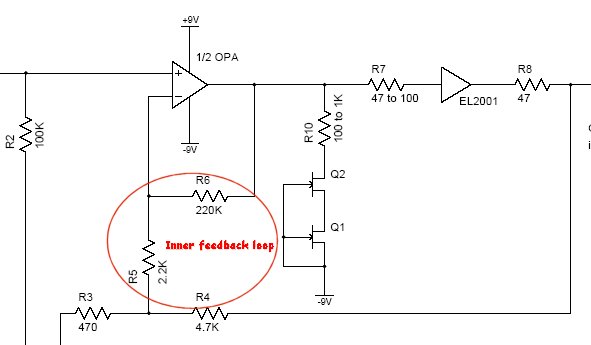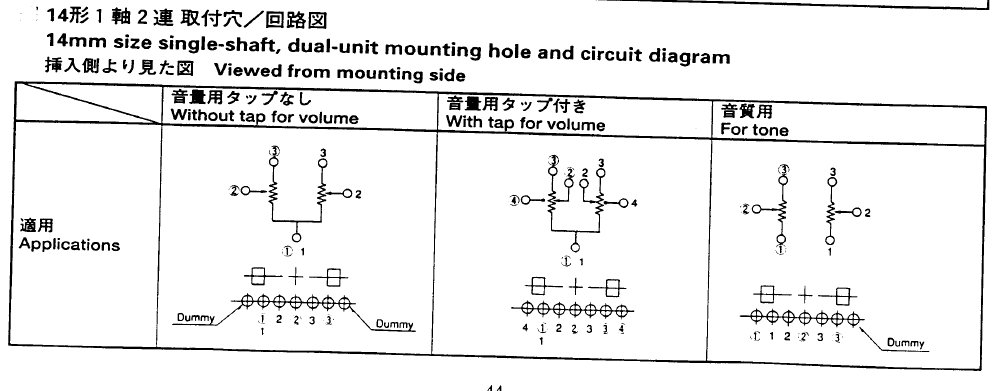
jtfoo
-
Content Count
452 -
Joined
-
Last visited
Posts posted by jtfoo
-
-
Thanks for recomendation. But Clementi too far......
-
Your cabling are very neat, unlike mine. And the LEDS, they're blinding, how much you got for them?
The 12-0-12 tranny should give better margins....
-
Why must cable tie the transistor face to face?
-
How much is that torroidal?Can't remember the exact cost, it's above $30 from Farnell. Actually I wouldn't need a toroidal, since the PSU is built on a separate enclosure. Toroid has low hum field which it good for for amps that has their PSU built in. But then kiasu, all good amps has them, so I got one.
-
Just a question,tropicarips, Can you still get 9Vdc after you loaded your PSU? I'm just speculating that with only 9-0-9 tranny, you probably get slightly above 12V after rectified. But taking to account of voltage drop across rectifier diodes, roughly 1.4V, you're left with around 11V. To regulate to 9V, there's a delta of only 2V or so, pretty low margin. A LDO regulator might do the job, but the normal regulator might find it tough.
-
anyone else with other DIY power supply?all are welcome to post in this tread

how much does the LM317 & LM337 cost jason?
how to do a slow start-up

I made a PSU for my PPA and MEtA42. It's switchable between 27Vdc and 24Vdc, for powering (meta @24VDC) and charging charging the batteries on the PPA(@27Vdc). I posted it back some while ago here, http://www.sgheadphones.com/index.php?showtopic=1297
Here's a pic
-
Just a note, though the project looks simple, the FET (IRF610) must be matched. You have to built a simple circuit and a 12 to 15volt DC supply to do the matching. So it's kinda of a hassle here if you're starting from scratch. After this project, I might have extra matched IRF610 in I'm lucky. Can let go some.
-
I'm in the process of making one. Using his board but not his kitset..
USD$22, does not include the tranny and PSU.
-
i find the SR-80 sounds best when listening to over-driven electric guitar, like those older rock bands, Rainbow Deep Purple & Jimi Hendrix, i'm listening to "Wu Bai" now, its a best of album, with 24 bit recording & gold disc, his over-drive guitar sounds very warm on my SR-80, with slow attack & slow decay, u can almost hear the strings hitting the finger-board of the guitar

Your description makes me drool.. I like those vintage guitar sound too...
-
If you got friends who diy, opened up the casing and see if it has dual primary winding. If it is, then you in luck, a little re-wiring should do the job. AS Jason mentioned, dual primary windings transformer are getting common on audio products.
-
I got a new 20MHz scope for 300+. A DIY book on amplifier would also be helpful.....Wah Jason, you got scope ah? Where did you buy yours, and what brand?
-
RawHitIf you read HeadFi postings, especially fr Carlo(famous for his Maestrobator), you'll note that the pre section on the std SHA-1 was put in as an afterthought, whereas the Gold and Maestro versions have full preamp sections, plus other refinements. So the preamp and headamp, although have a lot in common, have diff objectives. If the gain for the headamp and preamp are diff, it could very easily mean that one would be better than the other for that specific application.
I did try out the Melos as a pre in my setup, and it sounded very noisy. Now it does do the function of a preamp, but without the proper preamp stage put in, it won't perform optimally in that application. I suspect the gain was also too high for my poweramp as well, but it was noisy.
Disclaimer : I'm not a techy, correct me if there's an error.
cmk,
You're right, a headamp would not behave properly if it were to use as a preamp directly without some modification, becoz we'll have 2 gain stages. A little turn of a volume knob would result in huge increment of loudness. Need to do a little mod to convert to the head amp to unity gain. This can easily be implement on most head amp via a switch.
-
Actually active preamp and head amp are very similar.. looking at some circuitry, head amp borrowed designs from preamp and vice versa. The idea of both is to provide a low output impedance so as it's 'easier' to drive the next stage which would be power amp or headphone respectively. The diff here is head amp has a gain stage, which amplify the signal. While preamp usually has unity gain becoz the power amp it's driving already has a high gain.
For example a cmoy with buffer or even meta42 can easily be converted to a preamp by making them unity or very low gain. There are exception of course, like the PPA which cannot be converted else you loose the benefit of the differential output.
-
I have only one dealings with them, and it's rather pleasant. The person I dealt with was Adam Hung, pretty sure one of the Hung Bros. Call me back when stock has arrived, and gave me some idiscount the Klotz cable to go along with the Behringer mic preamp and mic. I actually ignore the moustache guy when he approached me, went straigt to the younger chap (Adam Hung)..
Or is it William hung???
-
ok let's say if i cant get polystyrene cap, what other kinds of caps can i get that can do the same job?Next best try Polypropylene. Evox Rifa should have them in 0.1uF (blue color). There's a shop at SLT basment that has alot of Rifa caps. Can't remember the name of the shop. Turn left if your climbing down the stairs from the entrance, located at a corner.
-
do all clocks have the same power requirement?is there a audio-grade clock?
It's very rare to have polystrene cap to such high value at 0.1uF... But maybe I haven't look hard enough..
the guys at echoloft should have more knowledge with clock mods. The audio grade clock I've heard are the XO clock.. Sorry can't help here as I never did a clock mod.
-
To add on,
1) In your course of diy, you'll won't be encountering Kilo, mega or even milli farad.
Symbol for, Microfarad =uF, Nanofarad=nF, picoFarad =pF. 1uF=1000nF, and 1nF=1000pF.
3) If you're replacing cap, it's best to know what cap you're replacing. If it's power filtering cap, having higher uF value would benefit (in diminishing return that is, thus bypassing with smaller value would benefit more) but voltage should at least be the same or higher. If it's the DC coupling cap, then generally higher uF would result in more bass, subjected to the RC filtering. But having more bass doesn't neccessary mean better sound, coz it's more taxing for your amp so sometimes it's just good enough to replace the same value with a audio grade one. Gotta to trial & error, or if lazy like me just read others recommendation.
4) ???
5) Clock should be the same frequency.
6) ???
-
Why not use OPA627 or others that is unity gain stable? No need to change your circuit.
-
-
Problem of this two source into one is there's a chance that the source that is on is driving not just the headamp, but also the source that is off. This might put some strain on the source that is on.
-
The JRC opamps, the 5.1uF coupling cap, the 100K pot, I think it's a upgraded RA1 clone with better layout/soldering.. I also had the same enclosure which I used for my PSU. hope you won't mind sharing how you cut the huge rectangle hole for the battery compartment?
-
If you do find a diff in your computer performance, suggest you help the guys over at echoloft where there're some heated exchange on power cords.
-
Duck,
You bought the Perraux already? Appears so from your avatar.
-




DIY books
in DIY Section
Posted · Report reply
Jason,
Have you embark on any interesting project from the book yet?
Could you scan and re-type the interesting ones here on this forum? Joking..
Joking..